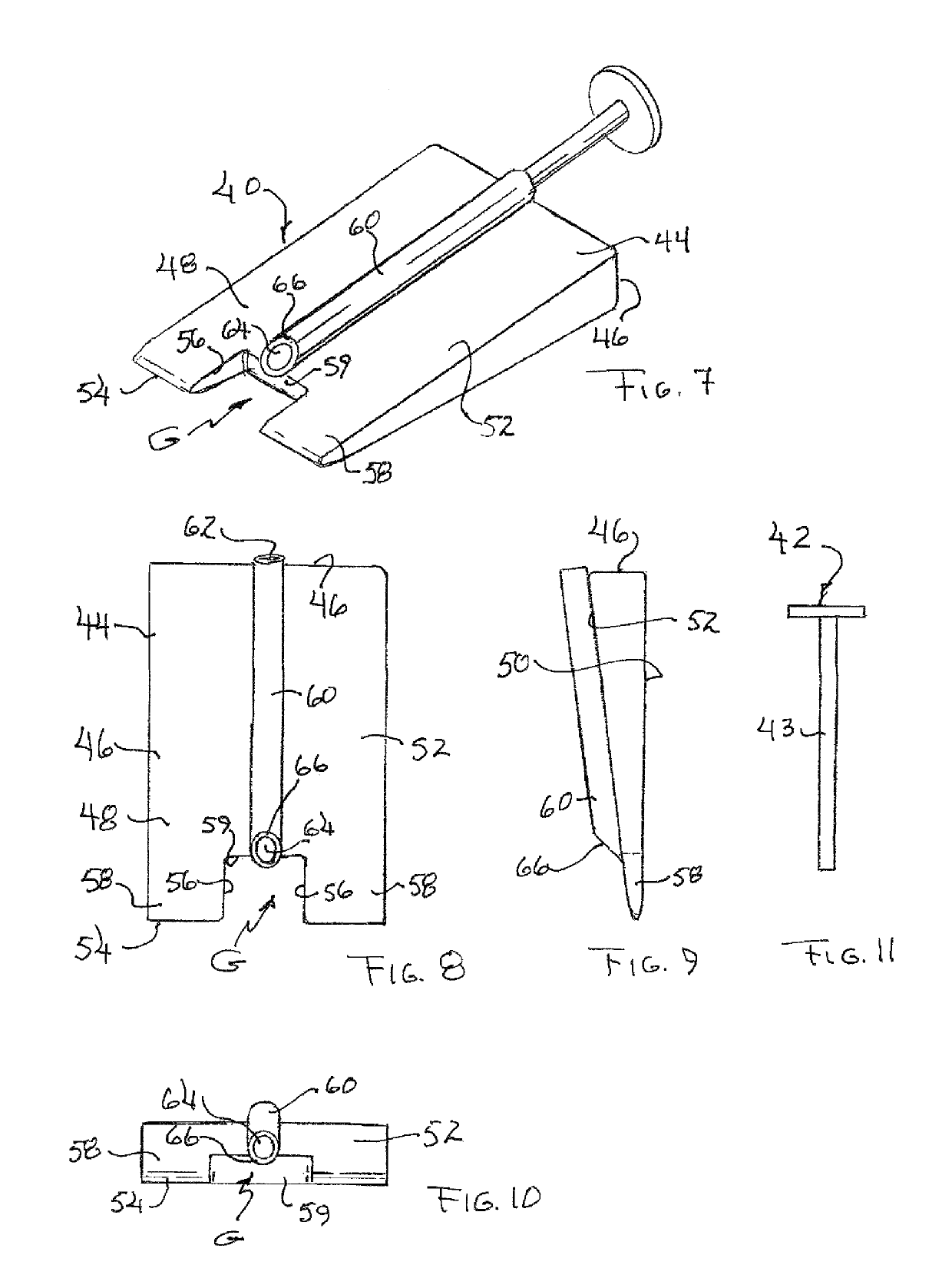Wedge device for facilitating treatment of interproximal dental caries, and method of use
a technology of interproximal caries and wedge devices, which is applied in the field of wedge devices for facilitating treatment of interproximal dental caries, can solve the problems of physical destruction of sound tooth structure, difficult effective access to interproximal sites, and inoptimal delivery of sdf by the shim device of flanagan patent, etc., and achieve the effect of preventing the progression of decay
- Summary
- Abstract
- Description
- Claims
- Application Information
AI Technical Summary
Benefits of technology
Problems solved by technology
Method used
Image
Examples
second embodiment
[0031]the device of the invention, illustrated in FIGS. 7 through 11, similarly comprises a downwardly tapered plastic wedge body, generally designated by the number 40, and a plunger, generally designated by the numeral 42. The wedge body 40 has a top portion 44 at one end, providing a top surface 46, and a bottom portion 48 at the other end. A planar first side surface 50 is perpendicular to the top surface 46, and a planar opposite side surface 52 is disposed at an acute angle to the top surface 46 and thus is inclined relative to the first side surface. Here again, only the bottom portion 48 the body 50 need be tapered.
first embodiment
[0032]As in the first embodiment described, the bottom portion of the body 40 terminates in a bottom edge 54, which is indented at a central location to form an upwardly extending gap G, defined laterally by the interior surfaces 56 of leg elements and upwardly by a wall surface 59.
[0033]In this embodiment of the invention (which will be preferred in many instances), rather than providing a passage through the body 40 (32 in the device of FIGS. 1 through 6) a tubular element or structure 60 is attached to the surface 52 of the body 40 on its longitudinal centerline. The structure 60 has a bore 61 (best seen in FIG. 12), providing a passage with an entrance 62 adjacent the top surface 46 of the body 40 and an exit 64 opening to the gap G, adjacent the defining upper wall surface 59. The cylindrical stem 43 of the plunder 42 is slidably received in the bore 61 of the tubular structure 60.
[0034]With particular reference to FIG. 12, and using the wedge device of FIGS. 7 through 11, as e...
PUM
 Login to View More
Login to View More Abstract
Description
Claims
Application Information
 Login to View More
Login to View More - R&D
- Intellectual Property
- Life Sciences
- Materials
- Tech Scout
- Unparalleled Data Quality
- Higher Quality Content
- 60% Fewer Hallucinations
Browse by: Latest US Patents, China's latest patents, Technical Efficacy Thesaurus, Application Domain, Technology Topic, Popular Technical Reports.
© 2025 PatSnap. All rights reserved.Legal|Privacy policy|Modern Slavery Act Transparency Statement|Sitemap|About US| Contact US: help@patsnap.com



